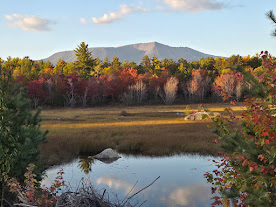
Maine landscapes with Indigenous names you should know
By Susan Bard, Bangor Daily News Outdoors Editor
I was recently corrected when referring to Katahdin. Saying “Mount Katahdin” is technically redundant, since the direct translation from the Penobscot language means “the greatest mountain.
That small correction — and my curiosity — sent me down a rabbit hole of researching other landscape names in Maine and discovering the funny or interesting translations they carry.
I find it a bit surprising when someone drives over a bridge or past a stream every day without knowing what its name means. Take Musquash, a stream in Down East Maine. It translates to the name of a small rodent with incredibly soft fur: a muskrat.

GREATEST MOUNTAIN — Katahdin, whose name comes from the Penobscot language meaning “The Greatest Mountain,” photographed in early October from the Golden Road, just south of Abol Bridge.
When I was in New Mexico, I noticed all the roads and landscape features had Spanish names, which made me regret having taken French in high school. Many of the names translate directly to what you see — like “round mountain,” “big valley” or “the pines.”
Others make you want to learn more about the area and its history. For example, Los Conchas translates to “the shells.” While the desert Southwest was once a seabed and marine fossils are common in some places, I initially suspected the name referred to fossils. The name actually describes the large, rounded, shell-like rock formations on the peak.
Back in Maine, the next time you’re on Mooselookmeguntic, Sebago or Nicatous Lakes, and the fishing is slow, you can share a fun fact with your buddy about what each lake’s name actually means.
In recognition of Indigenous Peoples’ Day on Monday, I’ve put together a chart of some notable landscape features in Maine — mountains, rivers, streams and other well-known places — whose names come from the languages of tribes in Maine.
These places reflect the history and heritage of the Native peoples who have lived here for thousands of years, and knowing their meanings helps us understand that history.